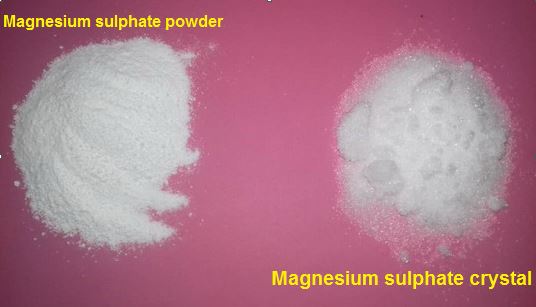
Blog
Magnesium sulfate or magnesium sulphate

Magnesium sulfate (or magnesium sulphate) is an inorganic salt (chemical compound) containing magnesium, sulfur and oxygen, with the formula MgSO4. It is often encountered as the heptahydrate sulfate mineral epsomite (MgSO4·7H2O), commonly called Epsom salt, taking its name from a bitter saline spring in Epsom in Surrey, England, where the salt was produced from the springs that arise where the porous chalk of the North Downs meets non-porous London clay. The monohydrate, MgSO4·H2O is found as the mineral kieserite. The overall global annual usage in the mid-1970s of the monohydrate was 2.3 million tons, of which the majority was used in agriculture Uses Medical: Magnesium sulfate is a common mineral pharmaceutical preparation of magnesium, commonly known as Epsom salt, used both externally and internally. Epsom salt is used as bath salts and for isolation tanks. Oral magnesium sulfate is commonly used as a saline laxative or osmotic purgative. Magnesium sulfate is the main preparation of intravenous magnesium. Agriculture: In gardening and other agriculture, magnesium sulfate is used to correct a magnesium or sulfur deficiency in soil; magnesium is an essential element in the chlorophyll molecule, and sulfur is another important micronutrient.[22] It is most commonly applied to potted plants, or to magnesium-hungry crops, such as potatoes, roses, tomatoes, lemon trees, carrots, and peppers. The advantage of magnesium sulfate over other magnesium soil amendments (such as dolomitic lime) is its high solubility, which also allows the option of foliar feeding. Solutions of magnesium sulfate are also nearly neutral, as compared to alkaline salts of magnesium, as found in limestone; therefore, the use of magnesium sulfate as a magnesium source for soil does not significantly change the soil pH.

